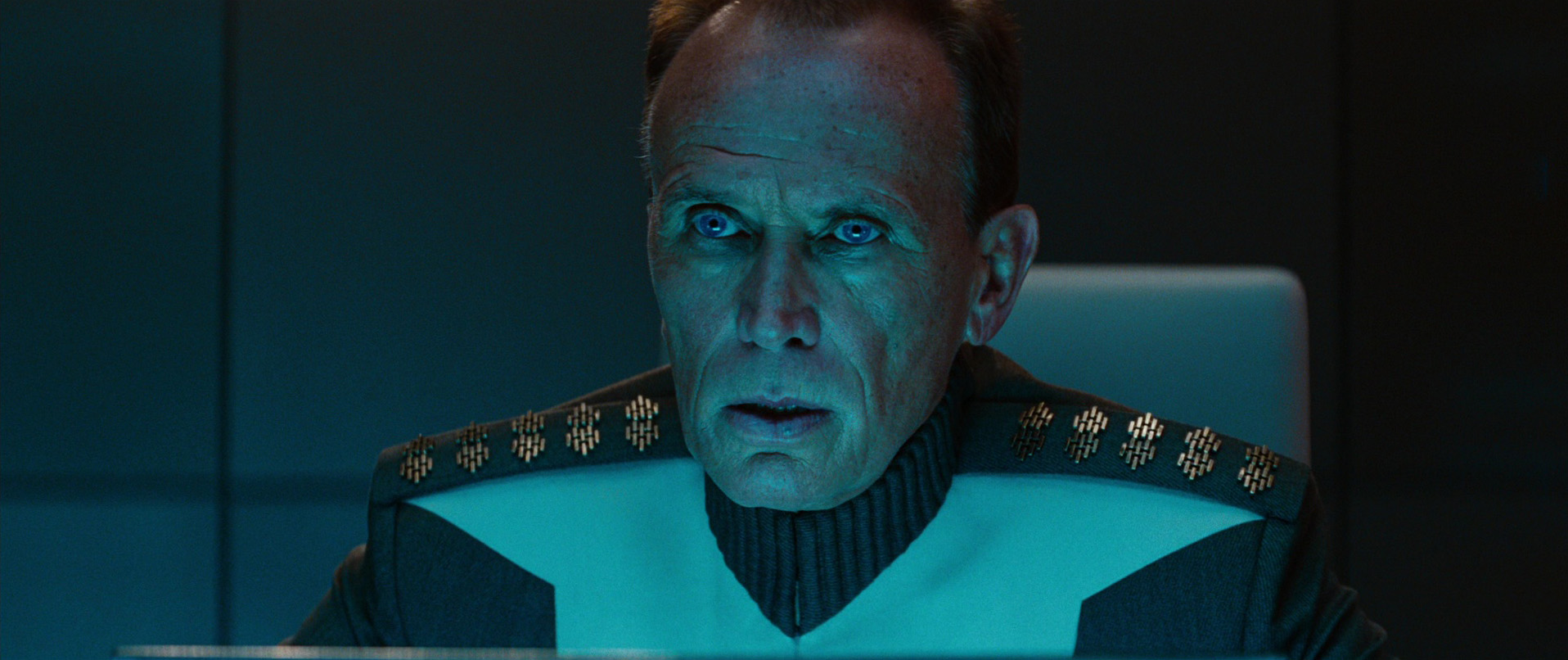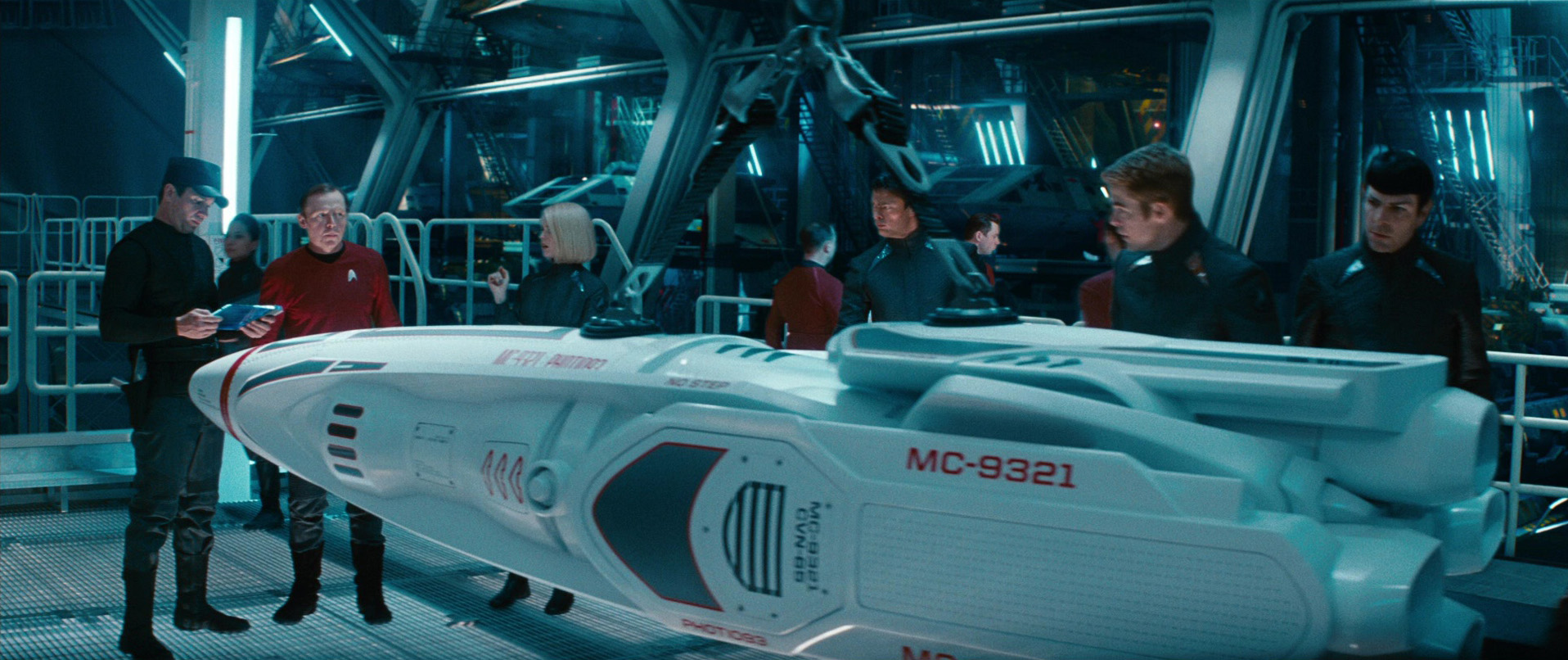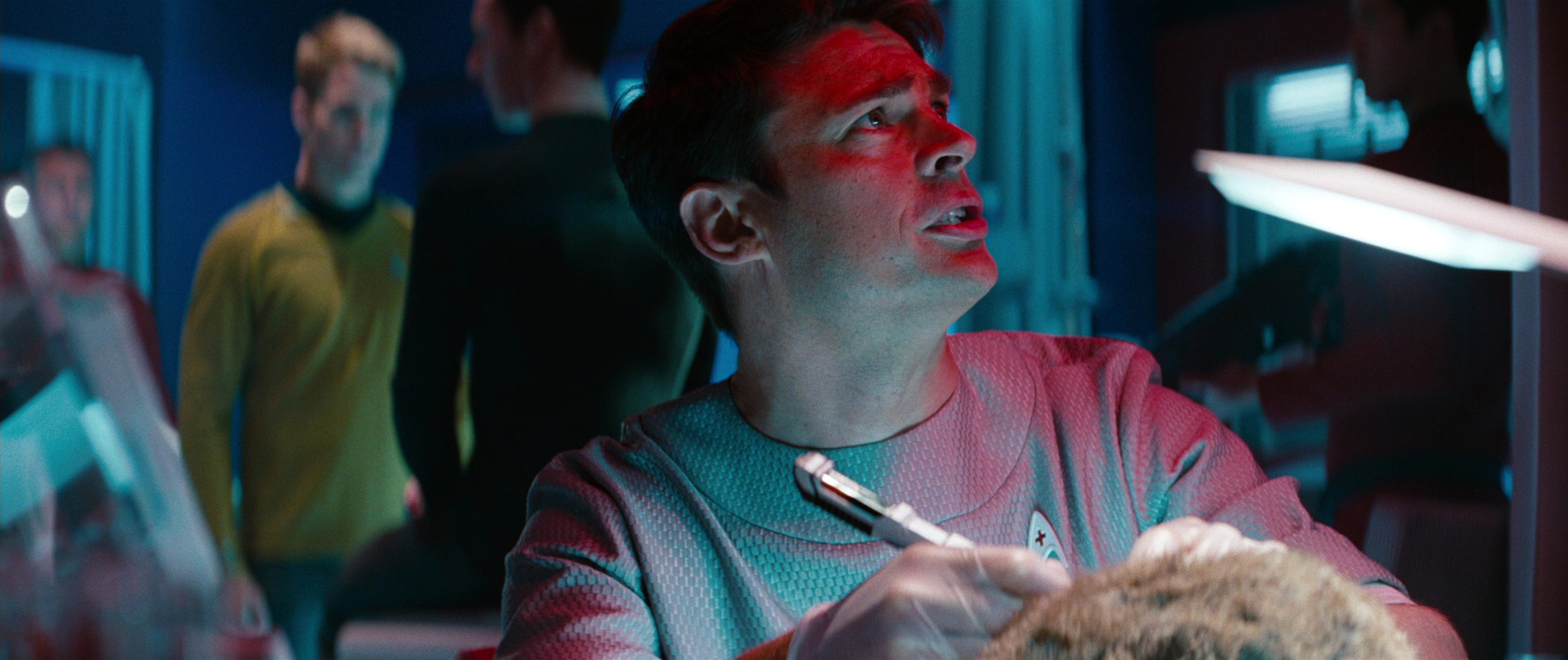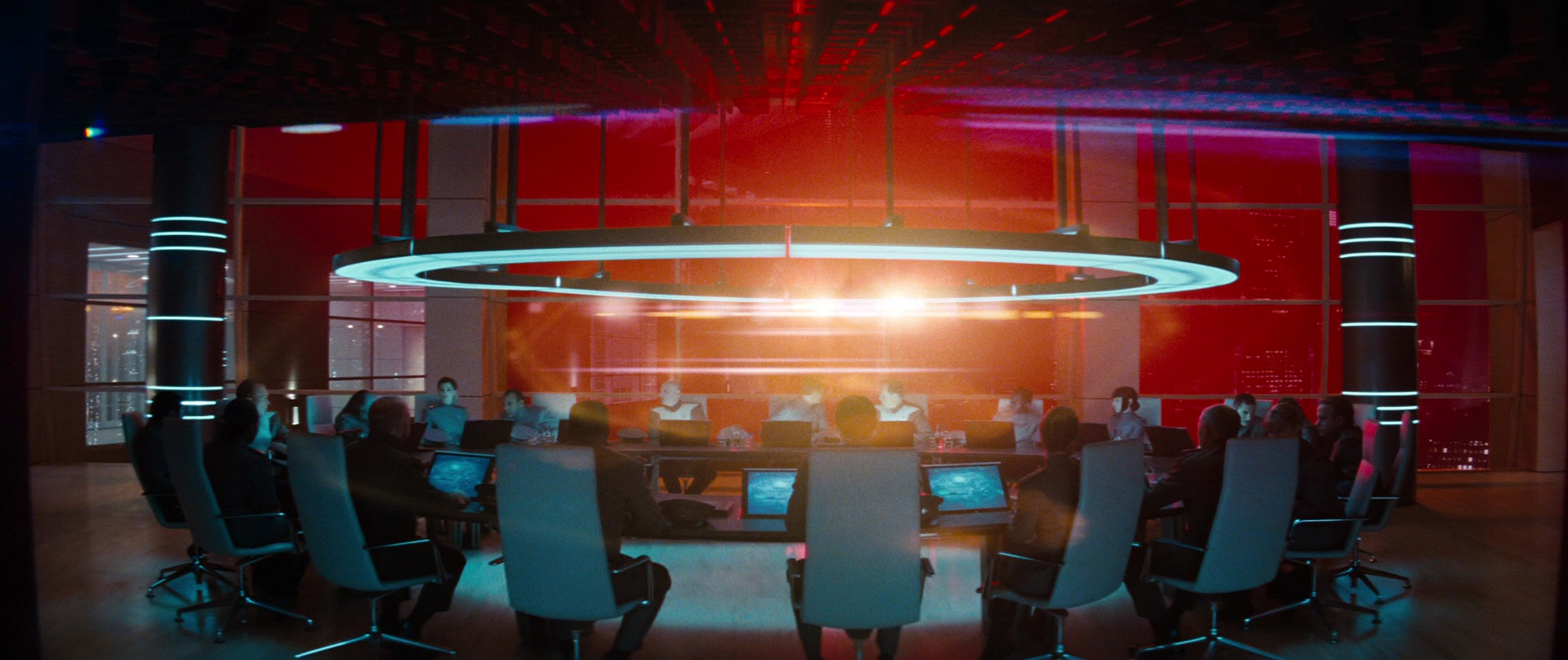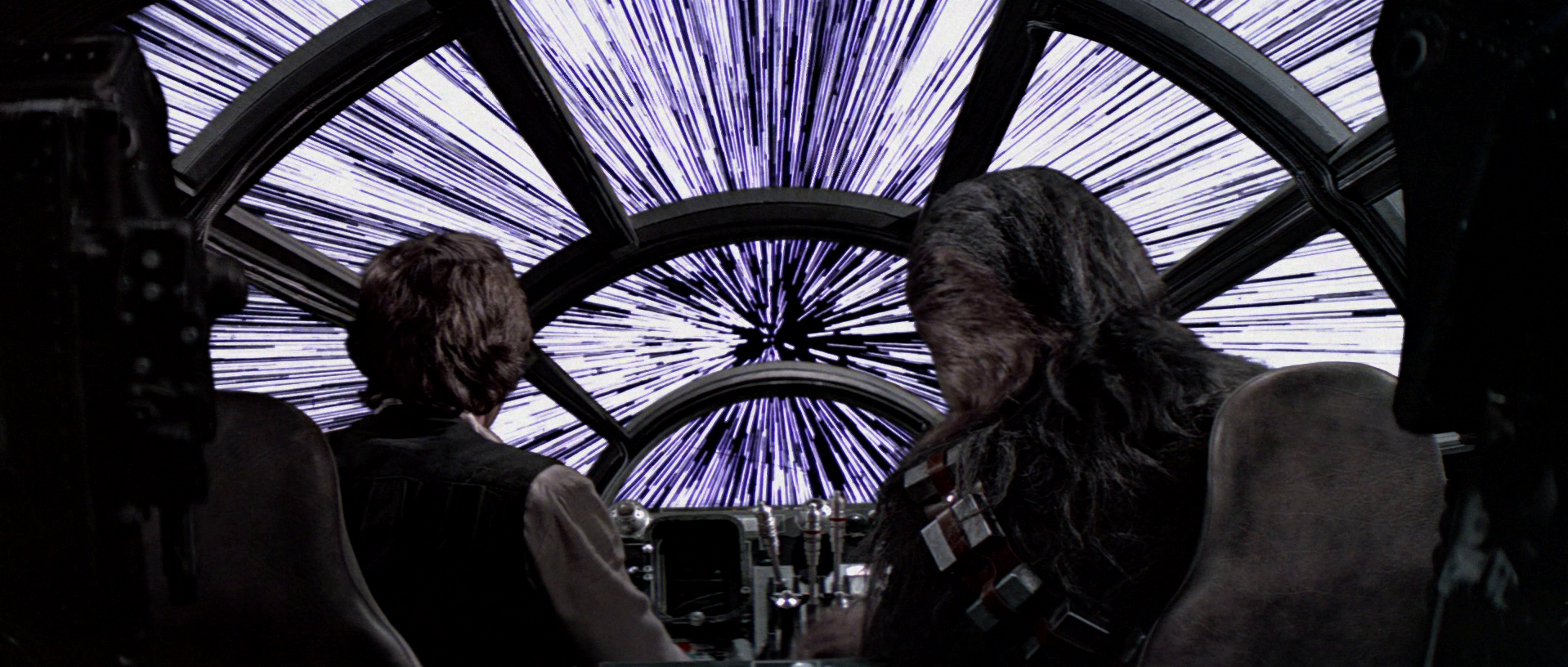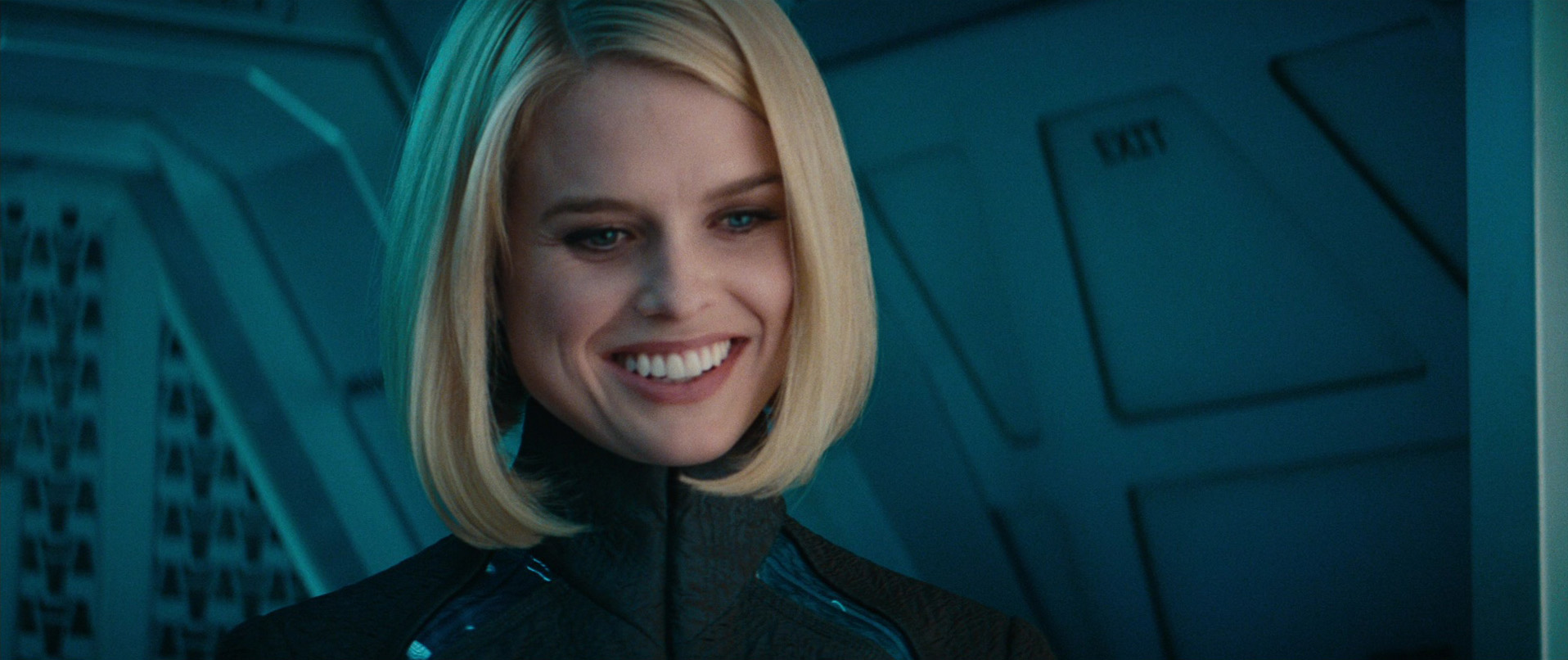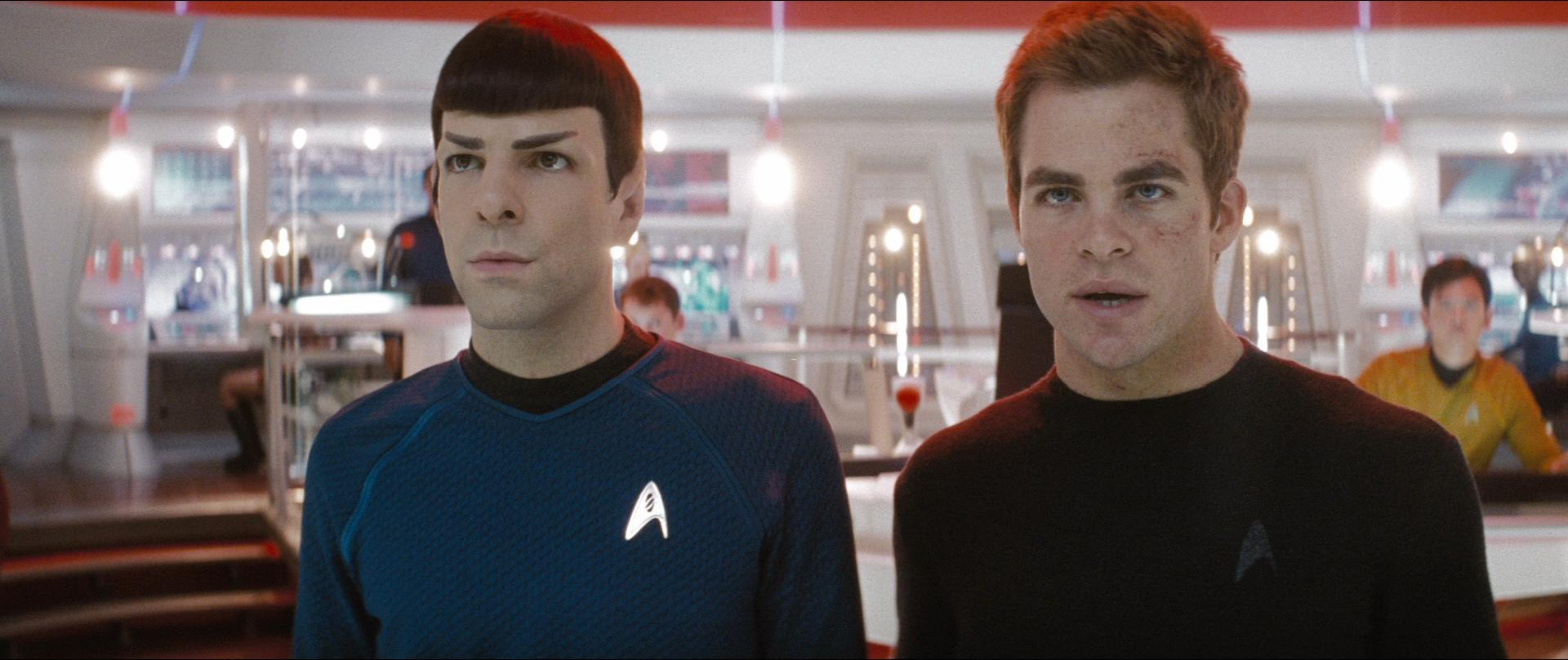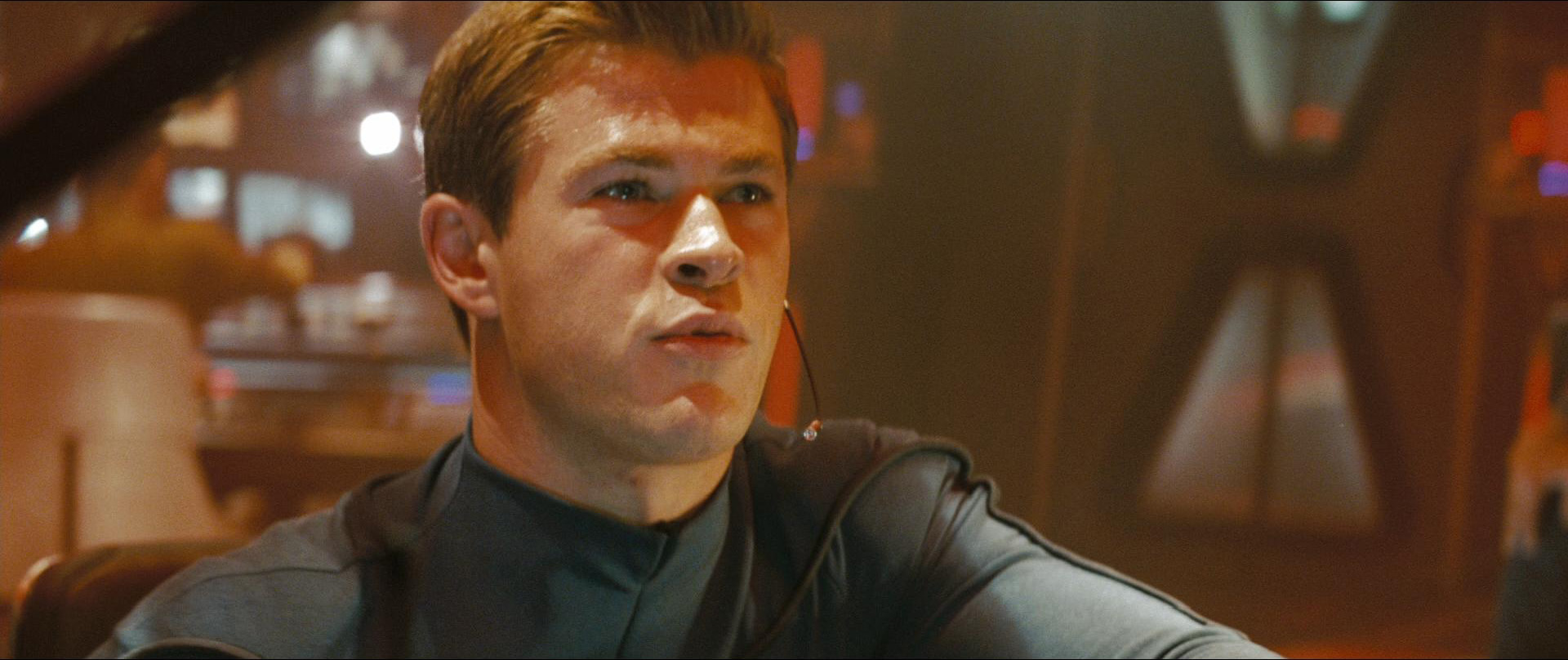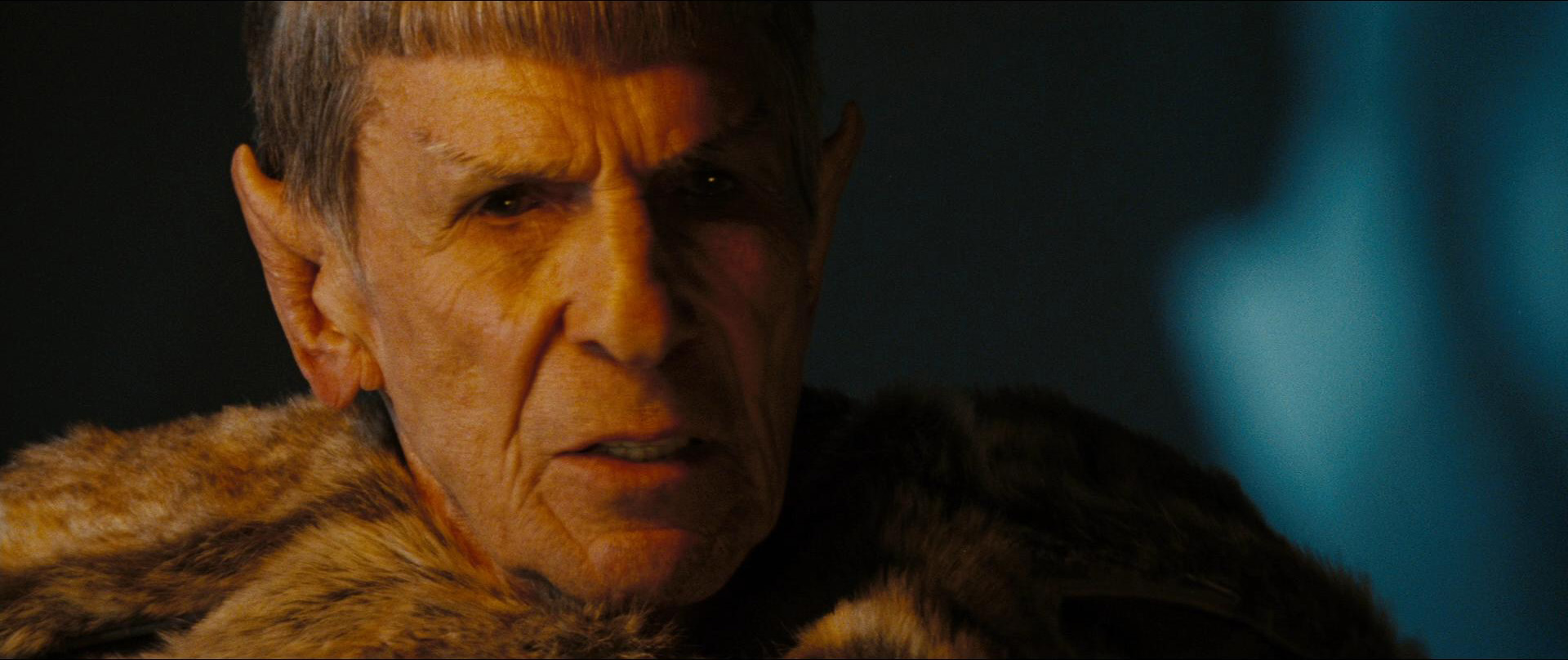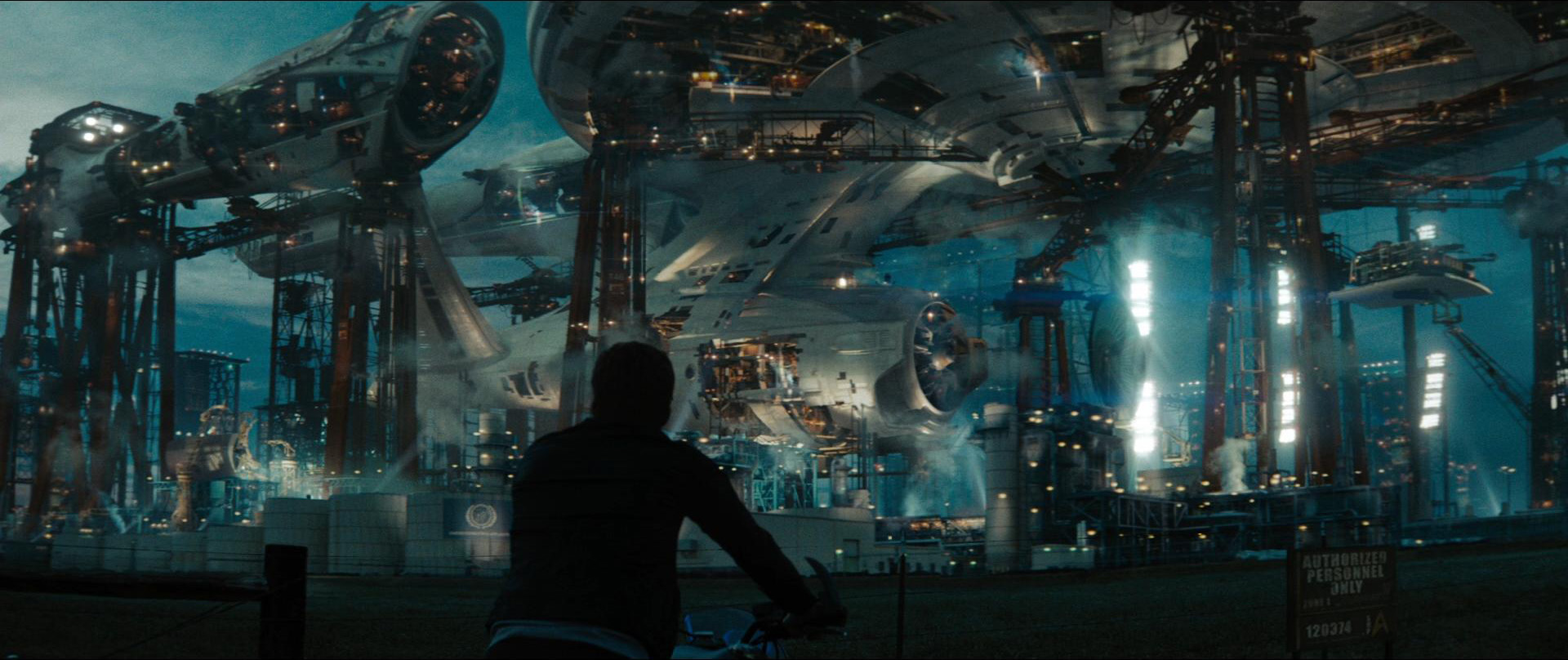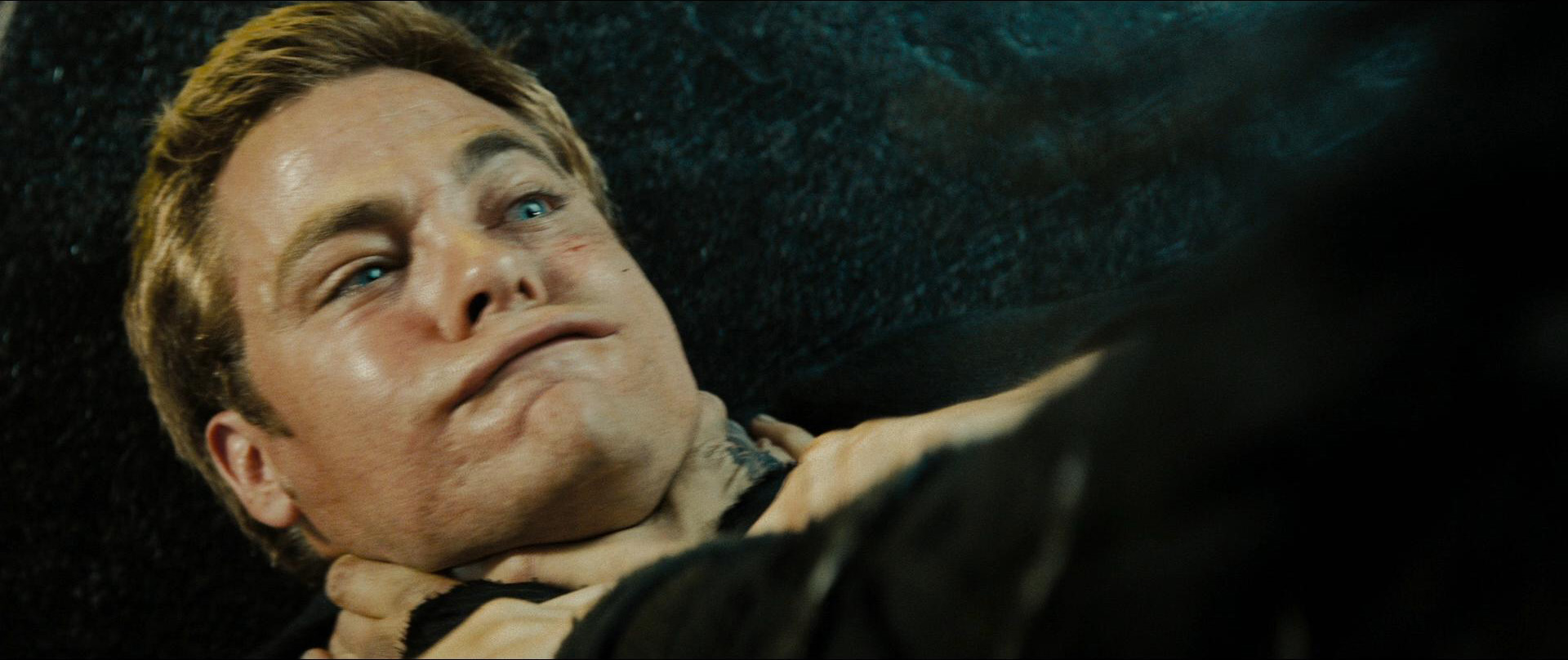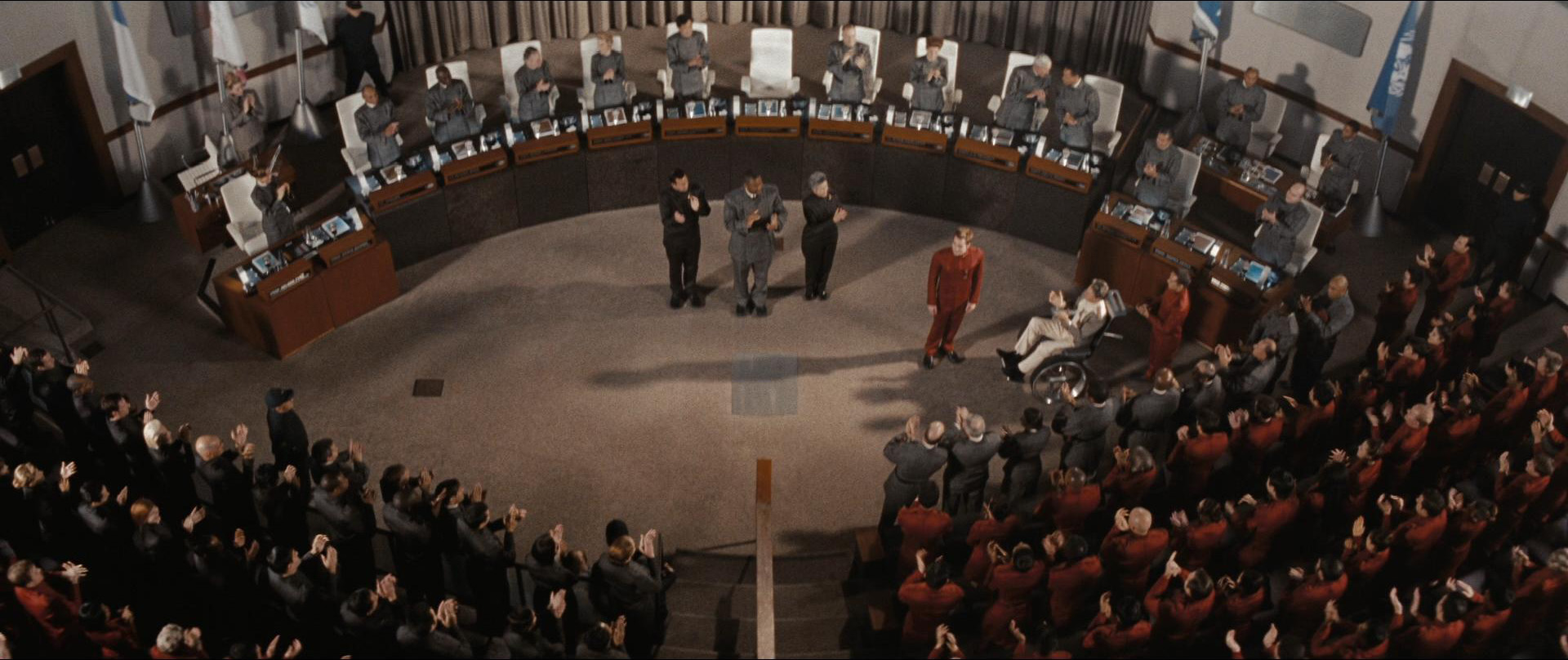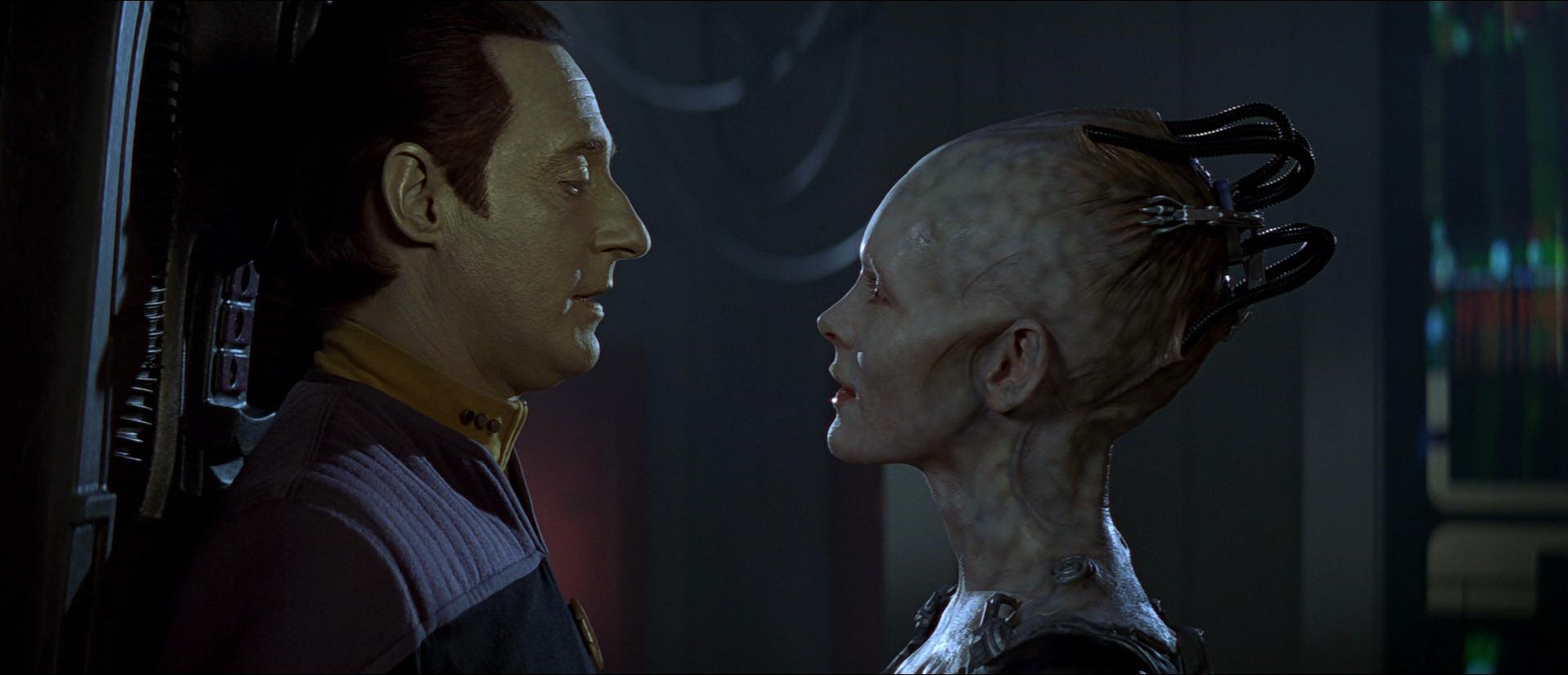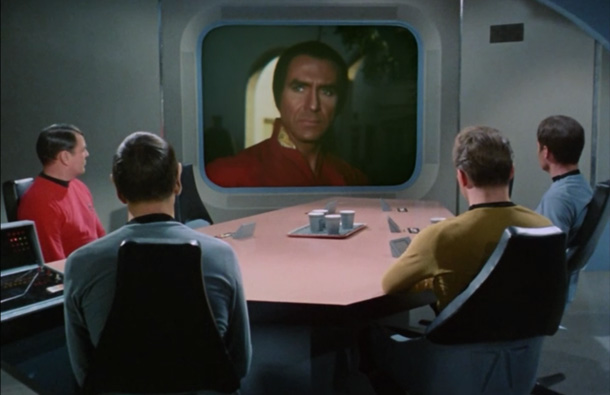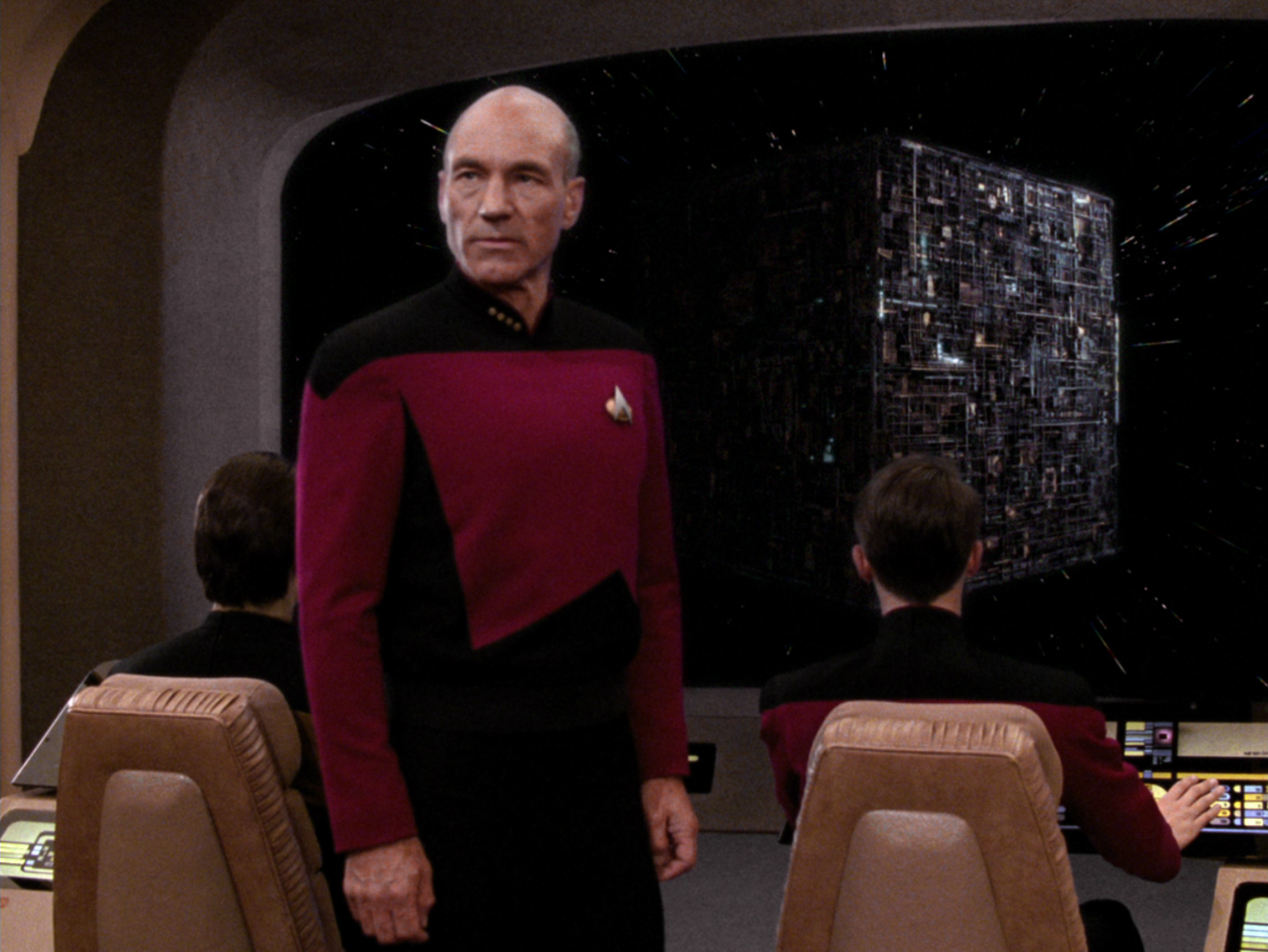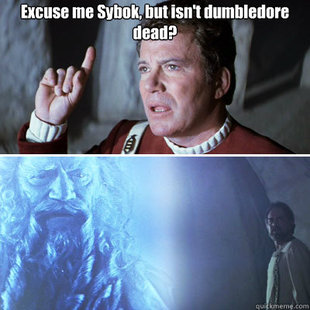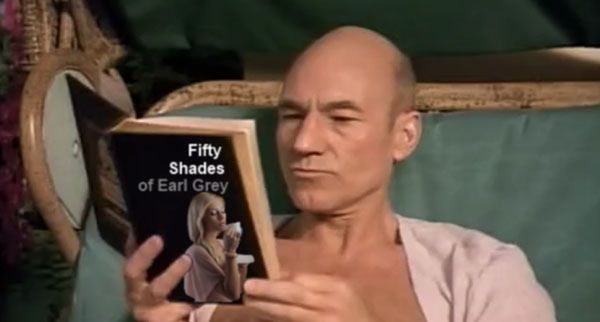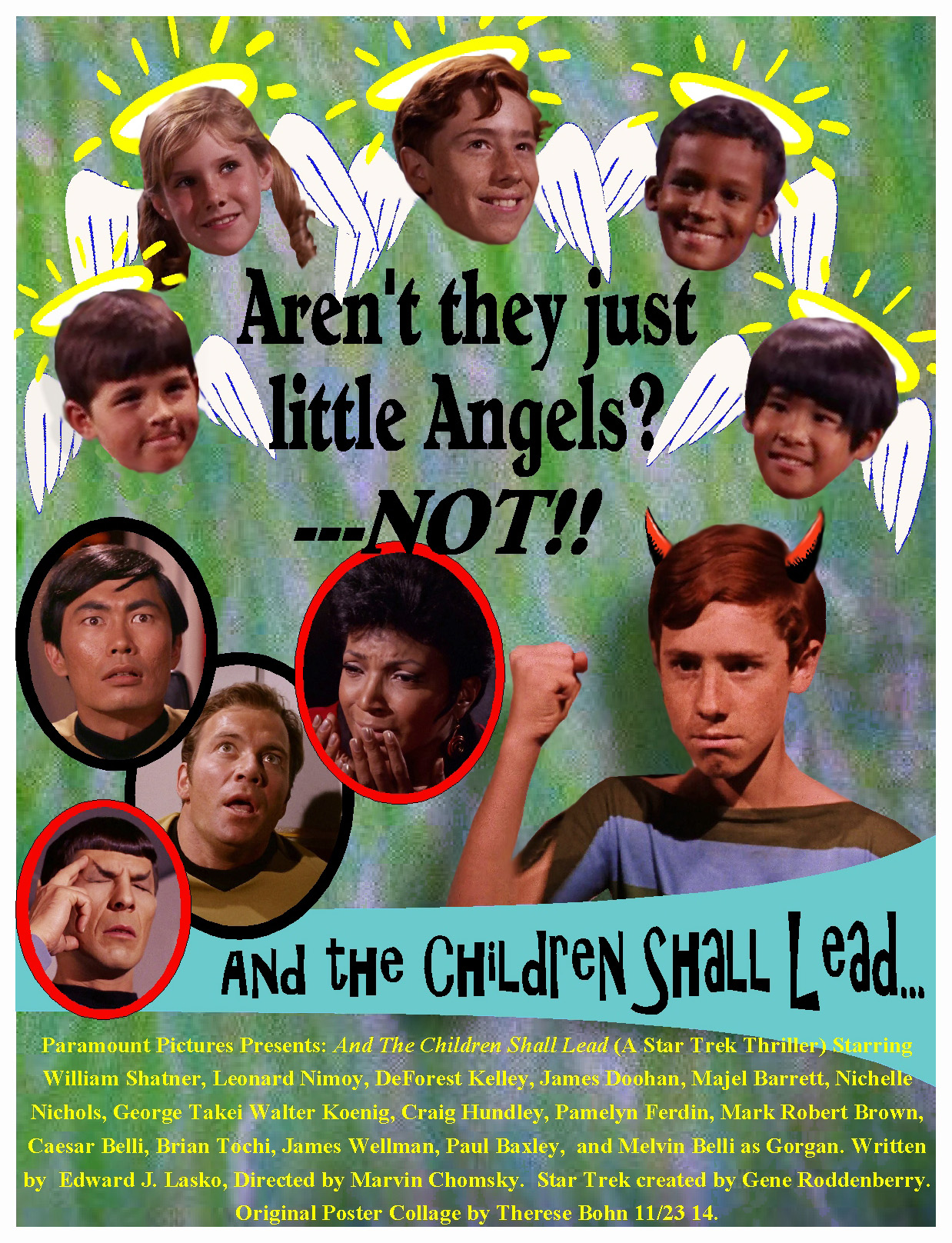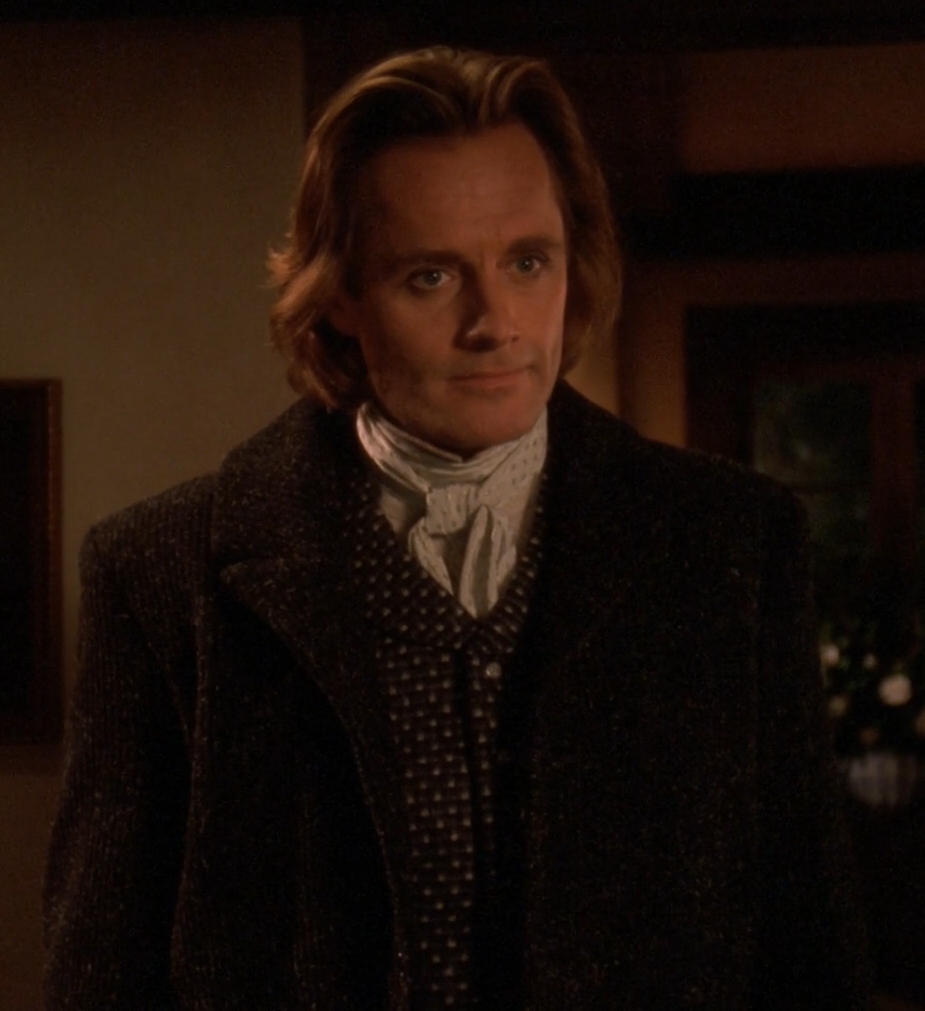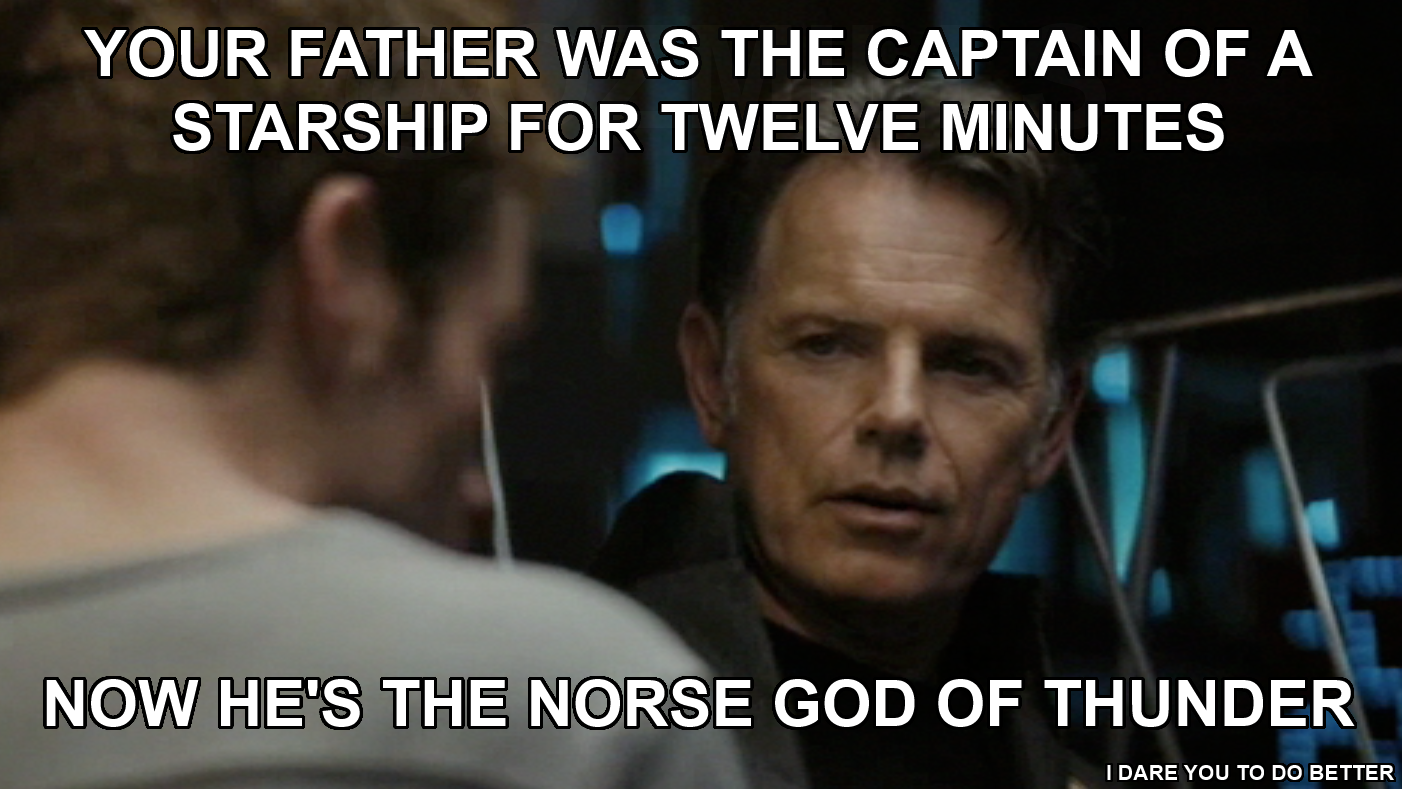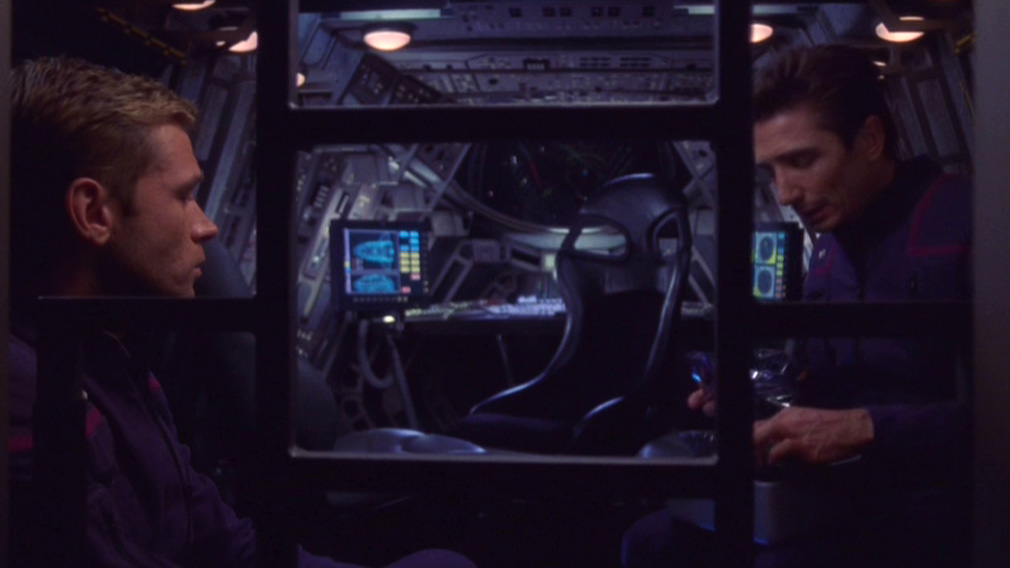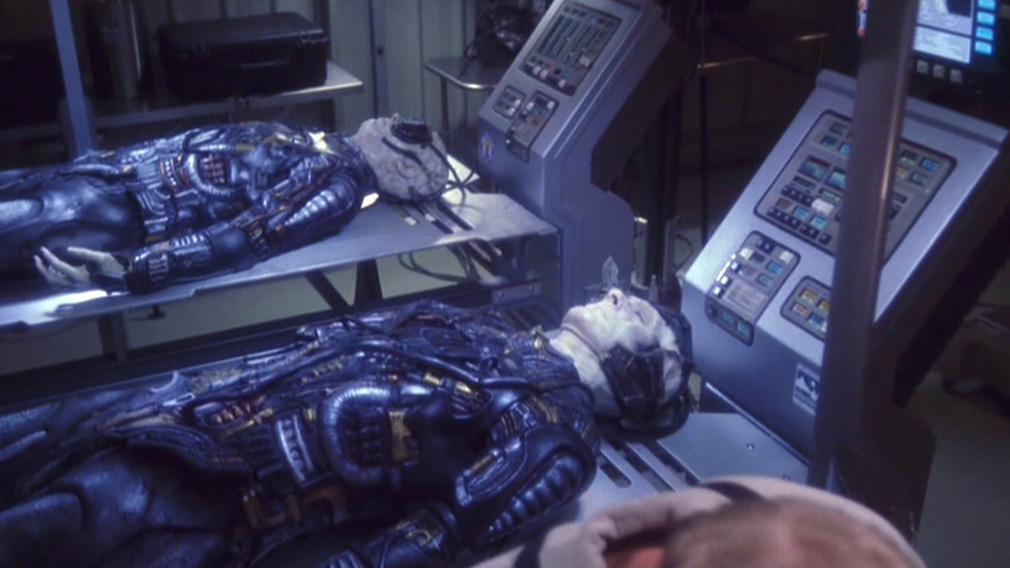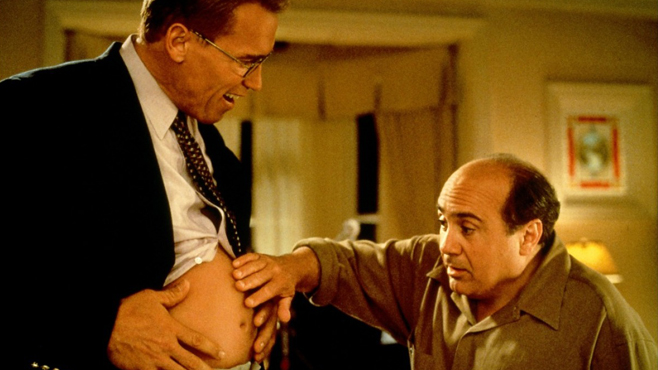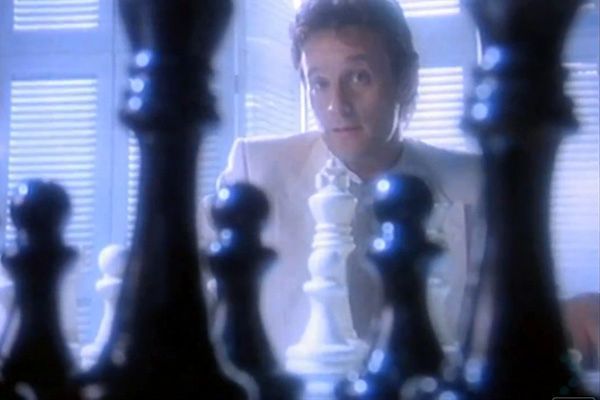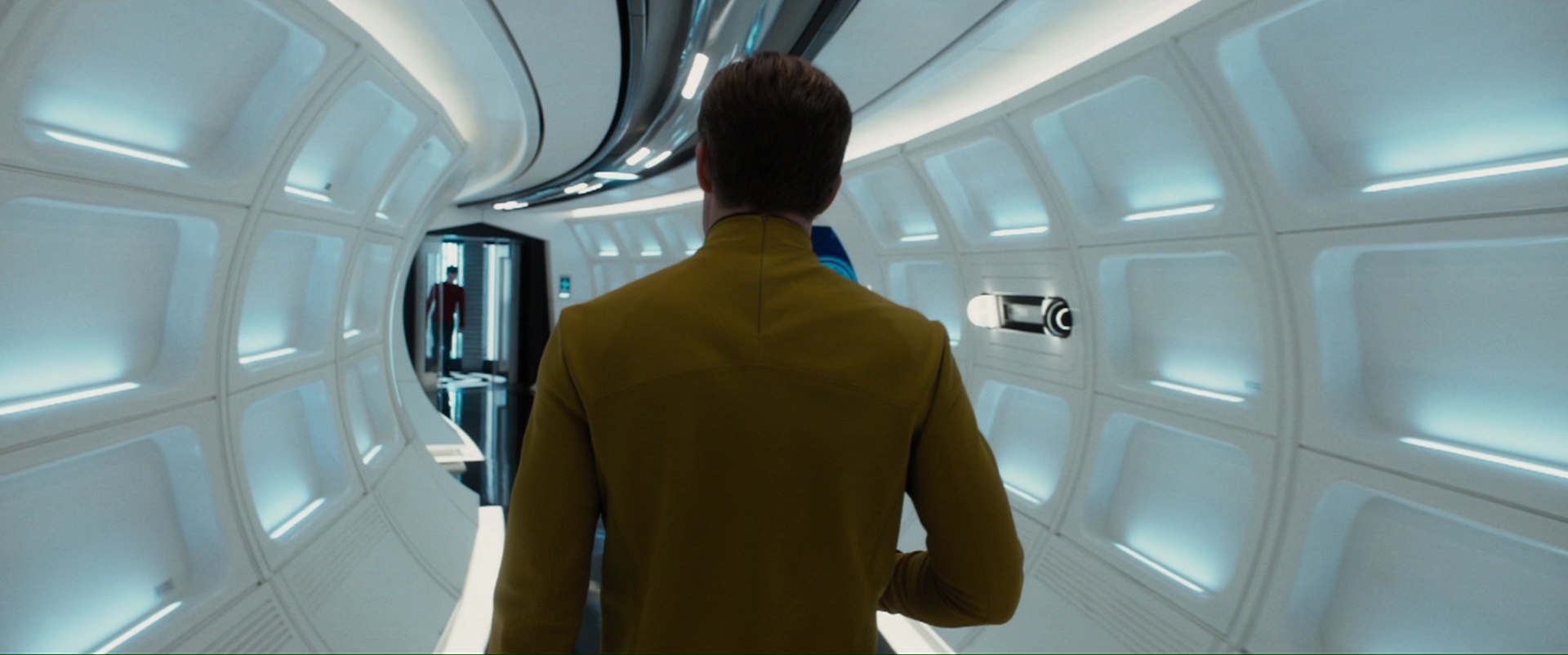
It’s three years or so since we’ve seen the reboot crew. The Enterprise is in the middle of its 5-year mission, and Kirk feels somewhat lost, almost “episodic.” The young captain has quietly applied to be an admiral with a desk job and Spock is applying to be an ambassador to help his beleaguered people. The ship puts in at the new and quite impressive Starbase Yorktown, and is then called away to an uncharted planet obscured by a nebula. Once there, the ship is savagely attacked by a swarm of ships that first destroys the ship’s nacelles (!) and then, cuts the saucer from the star drive (!!). The saucer eventually crashes on the planet with most of the surviving crew captured — leaving only Kirk and Chekov (in one group), McCoy and Spock (in another) and Scotty free. The perpetrator is Krall (Idris Elba) a nasty-looking dude who seems to have strong opinions about the Federation’s ideals and expansion. Scotty meets Jaylah, (Sofia Boutella) a youngish woman in hiding on the planet after escaping from Krall’s forces. She takes Scotty to an old Federation ship, the U.S.S. Franklin, thought lost more than a century earlier, that’s apparently abandoned on the planet. Eventually, Kirk and Chekov and later McCoy and Spock meet up with Scotty, and the group uses the Franklin’s transporters and Kirk on a motorcycle (because, of course) to rescue the crew. Turns out Krall attacked the Enterprise to steal an artifact the ship was carrying — Krall was tapping into Starfleet’s computers for a while — that can unleash a nasty weapon native to the planet. Krall escapes during the rescue attempt and his swarm heads for Yorktown. The Enterprise crew is able to get the derelict Franklin to work (hmmm) and disrupts the swarm’s signal with a radio signal — playing “Sabotage” in a nice callback to the 2009 reboot — but Krall is able to get into Yorktown. Around this time, Kirk figures out that Krall is actually the former captain of the Franklin, Balthazar Edison, marooned on the planet and embittered by his lack of rescue. He apparently discovered some ancient secrets there to prolonging his life and then, set upon his plan. He gets into Yorktown’s air system, where Kirk eventually stops him — releasing him into space before he releases the ancient weapon. With Yorktown saved, the crew celebrates — and Kirk and Spock decide to stick around for construction of their new ship … the Enterprise-A.
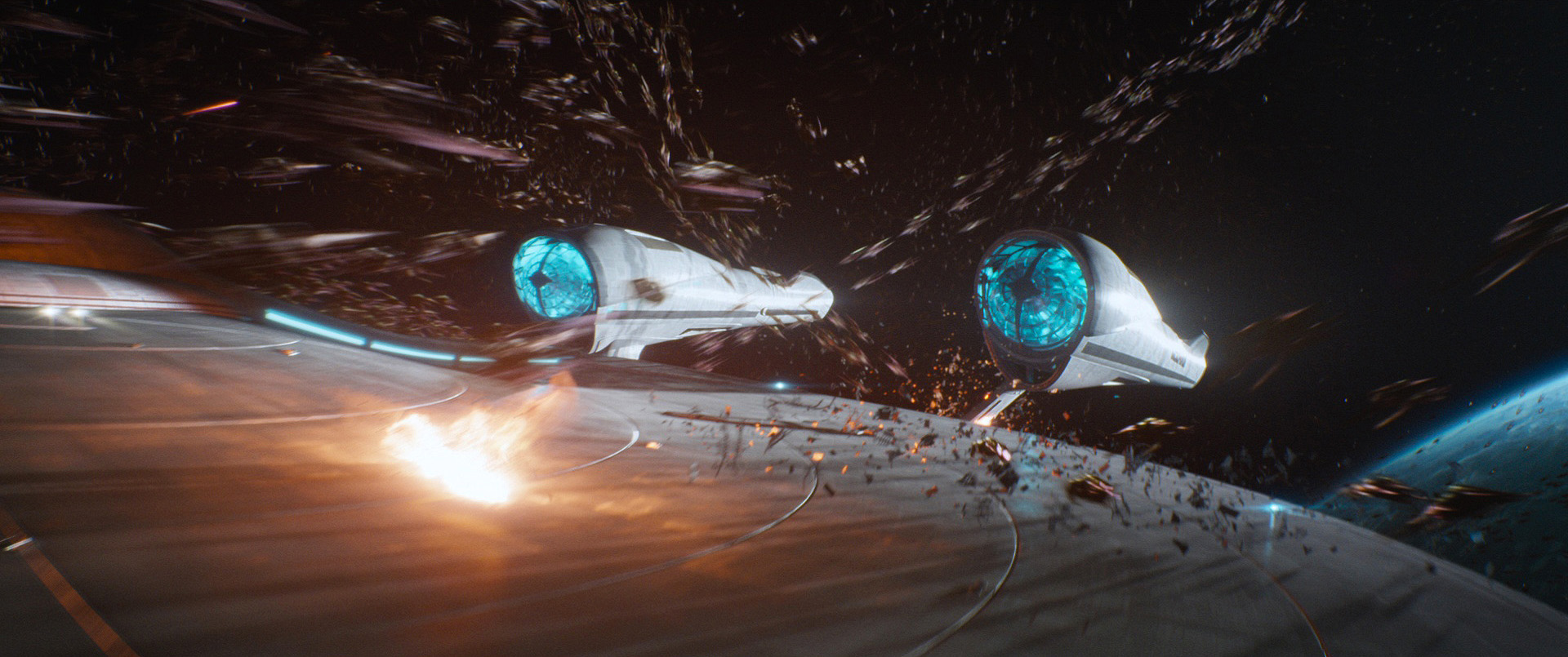
Why it’s important
Well, first and foremost, the Enterprise crew prevents a really nasty villain with an even nastier weapon from killing millions at Yorktown and then from (probably) going onto attack the rest of the Federation. It also indicates the growth of the Federation, by the fact that Krall is so enraged by its activities. Beyond that, one Enterprise is destroyed and another is being built, and Kirk and Spock decide to stick together — even though neither of them knew the other had plans to break up the band.
We also get a little more knowledge about the Federation’s early days. Apparently, more ships were launched after Archer’s Enterprise, and former MACOs (who featured prominently in Enterprise’s last two seasons) became part of Starfleet, with Edison rising to become a ship’s captain. It’s interesting that in dialog with Kirk, Edison mentions the Romulans and the Xindi — who had not been referenced in the other two reboot films or (of course) the Trek produced prior to the early 2000s. It was a good nod at continuity, that humanity’s apparent peace-making with the Xindi and (maybe?) the Romulans actually irked Balthazar and led, in part, to his becoming Krall.
And, of course, the film covers the death of Prime Spock to coincide with the 2015 death of Leonard Nimoy.
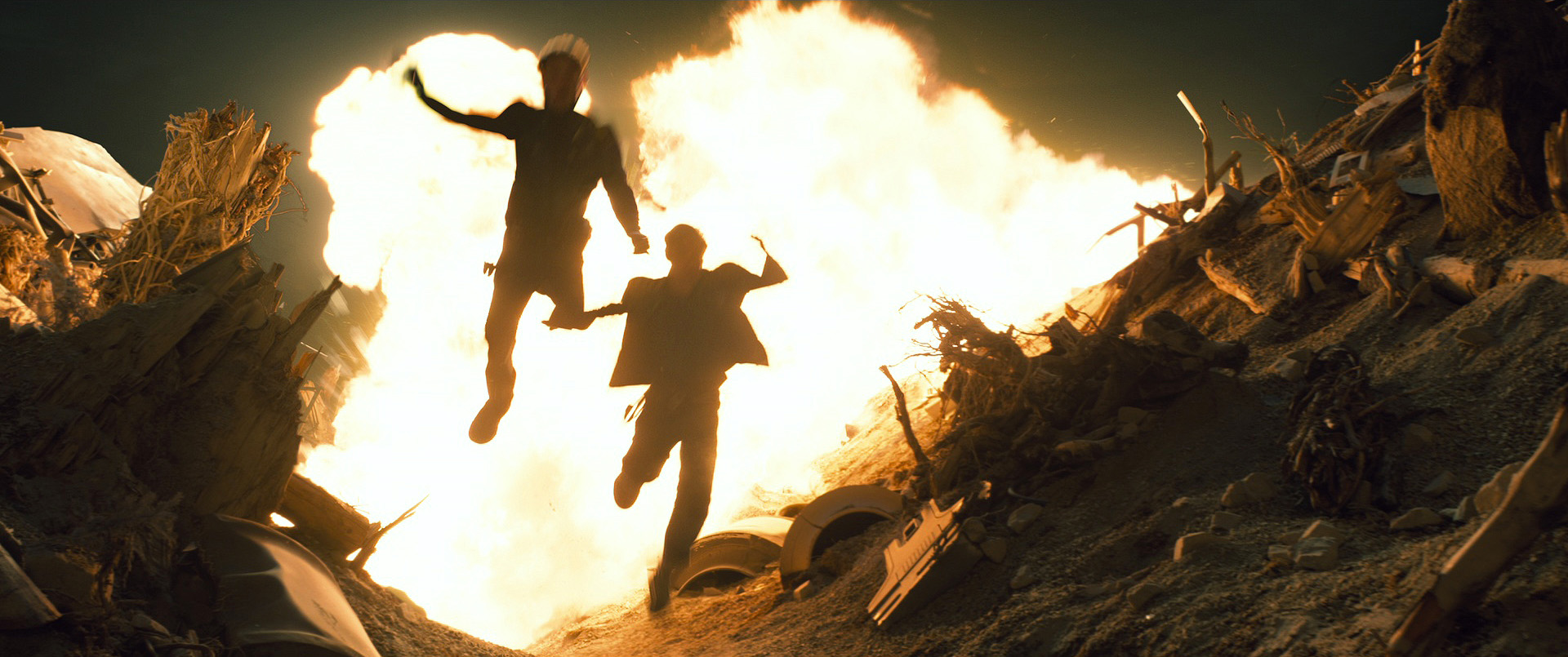
What doesn’t hold up
Having seen the film just once (obviously, in the theater) it’s possible that we’ll miss something. The film’s biggest conceit is probably that the 100-year-old Franklin would be so easily repaired and space worthy to get Kirk and Co. to Yorktown in time. I guess you could argue that Jaylah and (briefly) Scotty had been repairing it, but that’s still a stretch. Also, just how close was the nebula that contained the planet to Yorktown? It must have been somewhat far away never to have been explored — but it appears that the Franklin gets there on impulse.
The business around the artifact is problematic, too. Keep in mind that it was the gift Kirk tried to give to the weird gremlin aliens at the beginning of the film. What if he had succeeded? Did Krall begin his plan only after he knew it failed and that the artifact was being stored in the Enterprise’s vault? Was he just lucky that the Enterprise was putting in at a nearby starbase? It seems like Krall’s efforts would have taken some time-consuming planning.
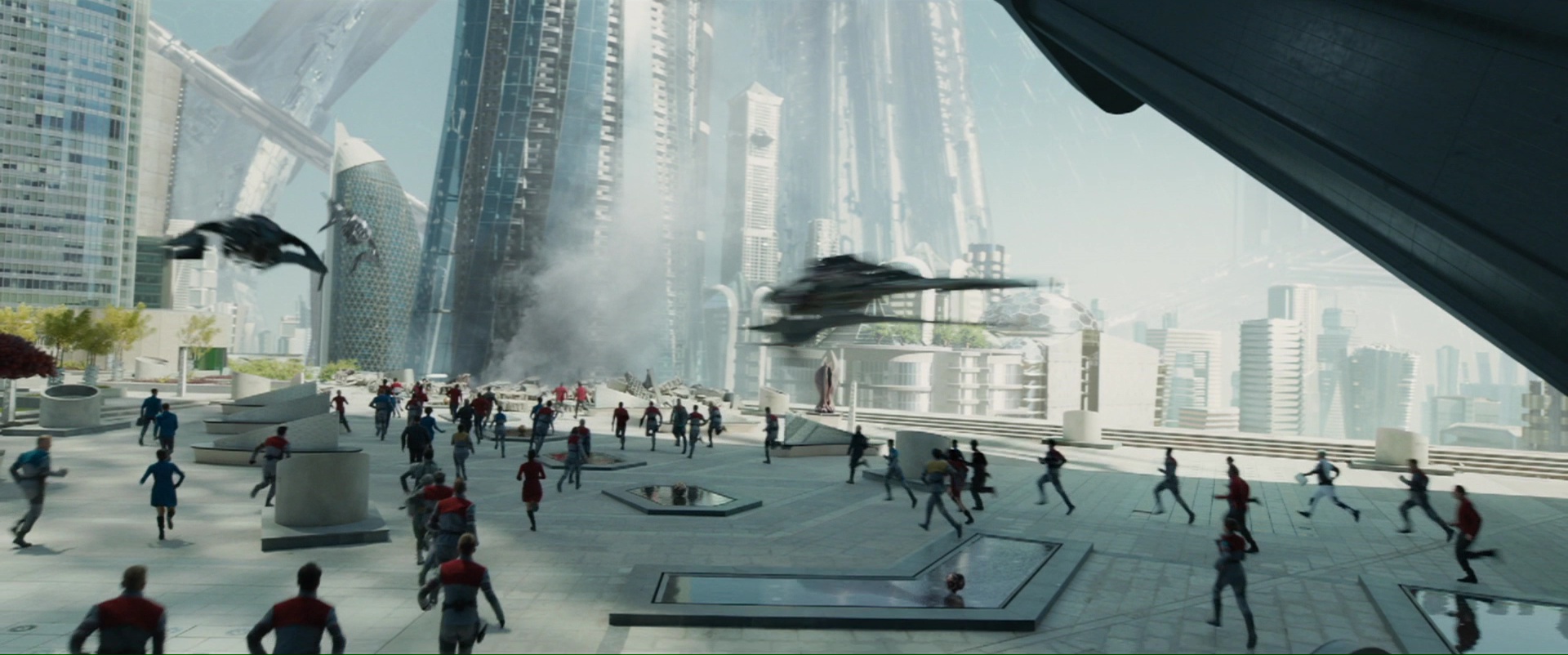
Final thoughts
I really, really liked this movie. It might not stand up to subsequent viewings, but it seems like the TOS crew’s “Star Trek II: The Wrath of Khan” or the TNG crew’s “Star Trek: First Contact”.
“Beyond” abandons a lot of the bad action-movie cliches from the previous two films (notably lens flares and unnecessary running through corridors — though the ridiculous number of costume changes continued). But I think I was most impressed by the way the film showed character’s growth and even their aging. “Into Darkness” portrayed the crew as still young and inexperienced, which worked in the first reboot but felt stale in the second. In “Beyond”, by starting the film with soul-searching by Kirk — an interesting choice, given Kirk in TOS didn’t soul-search unless his career was threatened — we see the an emotional undercurrent that ties the film together. Kirk in the reboots is more self-reflective at a younger age than prime Kirk was.
It also was nice to see the creators give everyone something to do this time around. “Into Darkness” largely ignored several characters, notably McCoy. Here, we see the trope of breaking characters into sub-groups to see how they’ll interact (Spock and McCoy, Kirk and Chekov, etc.). And while that is a trope, it works.
Last thought: I was sort of hoping that Edison, in his final scene with Kirk, would regain his humanity and help save Yorktown — rather than using a piece of glass to stab Kirk. That said, it wasn’t a horrible choice, and going the other way could have been overly schmaltzy.
We’ll see how “Beyond” ages upon subsequent viewings. But at this point, the creators should be given props for putting a really good movie that has the requisite action while also staying true to the spirit of TOS.

Coming … later?
“Star Trek: Discovery” is slated to debut in 2017. We might be back — but we haven’t really decided. Until then, thanks for reading — and peace and long life.

